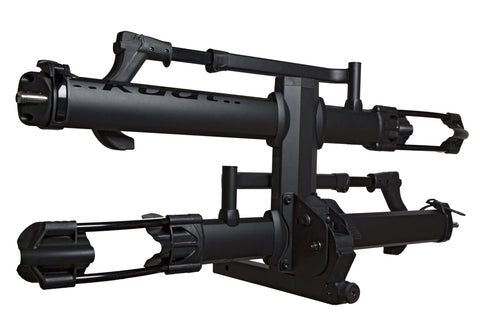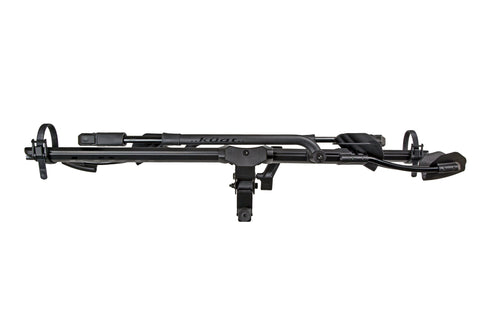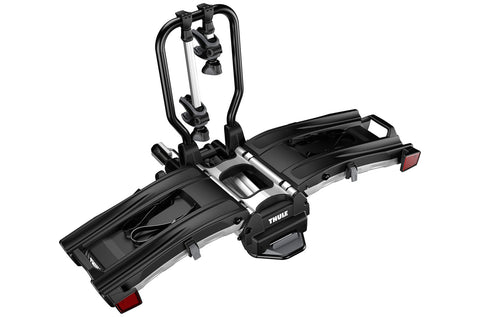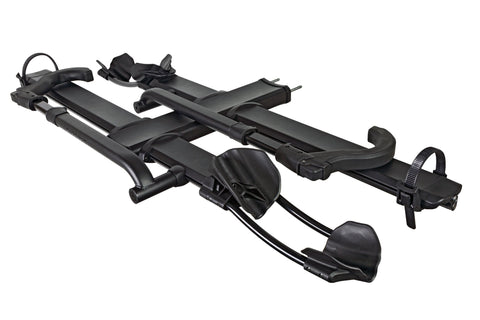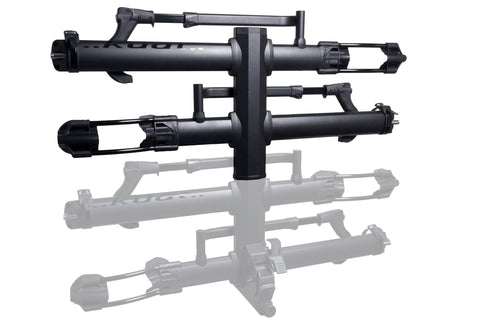Buying the Right Rack for Winter Gear
So you're planning on heading up to the mountains this winter to do some skiing or snowboarding. Regardless of how far you travel to the ski area, getting your gear to the mountain safely is as important as remembering to pack your gloves and boots.
Of course there are lots of options for carrying your winter sports gear and unfortunately there's no one-size-fits-all application. You could choose from a variety of roof ski racks, cargo boxes, dedicated snowboard carriers, or hitch mounted ski/snowboard racks.
Before you can determine which way you want to go, you must consider your carrying capacity. Will you be carrying skis for just you and a ski buddy? Or are you a family of 4 that make weekend trips regularly with luggage? If you can think of what you'll be carrying, you can make smart decisions on how to carry it.
Roof Racks
Probably the most recognizable way of carrying skis & snowboards is on the roof. Many of today's SUV's and crossover vehicles come equipped from the factory with some type of rack system pre-installed. And for skis and snowboards, these factory installed roof racks make a perfect foundation for attaching a ski rack. While it's true that many factory roof racks aren't as strong as aftermarket rack systems, they're most often completely satisfactory for hauling skis and snowboards. Bikes, on the other hand, create more torque on the crossbars and should be used with caution on these types of roof racks.
Even better, today's roof mounted ski racks, like those offered from Thule, Yakima and Rocky Mounts all have hardware that is designed to work on factory installed crossbars right out-of-the-box. If you decide to eventually purchase an aftermarket rack system, you won't need to purchase additional hardware to attach these racks.
So what happens when your car isn't equipped with a factory installed crossbar or roof rack? This is when you have to add a multi-sport base rack system to the roof of your vehicle. The base rack system becomes the foundation for accessories, like a ski/snowboard rack, cargo box or other sports like biking or kayaking. While the initial investment is greater, the long-term versatility and lifestyle improvements will eventually outweigh the initial outlay.
Roof ski and snowboard racks are all featured similarly. Today's roof racks are designed to carry the skis base to base - the same way you would carry them on your shoulder. Gone are the days of splitting up your skis and laying them down individually. A push-button opens the rack allowing you to lay your equipment down on soft, padded rubber. Once loaded, you'll close the top and secure the latch. It's that easy. The trick is determining which one works best for you, your car, and your carrying needs.
If you're carrying snowboards, or think there is a remote possibility that you will be carrying snowboards, don't shoot yourself in the foot and buy a rack that is too narrow. Remember, snowboards are about the equivalent width of 2 pairs of skis. You'll eventually end up carrying it in the car, and risk damaging your vehicle's interior, windows, or your occupants.
When you see ski racks that carry 6 pairs of skis, be reminded that this really means the rack will carry UP TO 6 pairs of skis. The exception to this is the Yakima Fat Cat 6, the largest of all ski & snowboard roof racks. Because ski technology is leaning towards bigger and wider skis, a good rule of thumb is to remember that a rack designed to carry up to 6 pairs of skis will likely fit 5 pairs of skis comfortably and a rack that is designed to carry up to 4 pairs of skis will fit 3 comfortably.
Some racks, like the Thule 575 Snowboard Carrier are dedicated snowboard racks designed to carry 2 snowboards. This is a good rack to use when space on the crossbars is limited, or you need the ability to carry extra snowboards that won't fit in a traditional roof ski/snowboard rack.
Not all roof racks have to mount directly to a crossbar. The Thule 5401 Snowcat is designed to clamp down to an elevated side rail that runs front to back on the roof where no crossbar exists. An example of this might be a Volkswagen Passat or Jetta wagon. The Snowcat has a built-in crossbar that telescopes out towards the sides of the vehicle.
Cargo Boxes
Also carried on the roof, cargo boxes offer versatility and security that a rooftop ski rack cannot. Cargo boxes can be used during the summer months as well for carrying camping gear, luggage and just about anything else you can load inside. From a winter sports equipment standpoint, the cargo box is ideal.
The features on today's cargo boxes are pretty impressive. Many are designed to open from either the driver or passenger side of the vehicle ( but only 1 side at a time) which is great when you're forced to park against a snow bank on one side, for example. The mounting hardware is also designed for easy installation and removal to all types of roof racks, including factory installed crossbars.
Security is also a bonus feature of a cargo box since all boxes include lock and key entry. Also, because boxes have 3 points of security associated with the latch mechanism on each side, you can be comfortable leaving your gear locked in the box overnight. Besides, thieves will rarely spend the extra time trying to get into a cargo box if they have no idea what is inside, if anything.
When the roads are wet and slushy, and you're driving with your wipers on all the time, your skis and snowboards (and poles) can be safe from the elements, and not exposed to the outside conditions. This keeps your bases clean and your bindings free of dirt, road grime, salt or magnesium chloride, depending on where you live or will be traveling. Better yet, at the end of a long ski day, you'll be able to drop your skis/boards back in the box, and be on your way.
Cargo boxes are sold by volume, which is measured in cubic feet and there are some considerations to take when looking at a box. First, make sure the box you are interested in is capable of handling your longest ski. Even though alpine skis are shorter these days, Nordic skis and race skis can still be in the 200cm range, and since Nordic skis are so wax dependent, you don't want to force yourself to carry them outside, exposed to the elements if you're buying a cargo box for your ski equipment. Right?
Secondly, make sure the box will fit your roof without rear hatch/door interference. If you drive a small vehicle, and want the biggest cargo box you can buy, you're likely to have a lot of the cargo box hanging over the windshield or not be able to open your rear hatch all the way. In our experience, 12" or so of the cargo box hanging over the windshield will be unnoticeable to the driver.
Hitch Mounted Ski Racks
Often, people feel that roof loading skis or other sporting gear is too difficult because they're either too short or their vehicle is too tall. Enter the hitch mounted ski and snowboard rack. Typically, these racks, like the Thule 987xt Hitch Ski Carrier, or the Softride Ski Attachment will use a bike rack as the foundation for mounting. So when purchasing one of these units, you'll need an existing bike rack to start or need to purchase one.
The upside to rear mounting is that the capacity can be larger than a roof rack, and all of your gear is easily accessed from the rear of the car instead of the roof. The downside, however, is that all of the wet road grime that splashes up behind your car is going to get on your skis.
There are other benefits of rear mounting, and that is when your parking situation has low overhead clearance. This is where the Softride Ski Attachment excels because it carries the skis on a slight angle. In any event, it's best to know your clearance before purchasing any rack system.
We hope you found this article helpful in making your decision on how best to carry your winter sports equipment. Cracks & Racks is a full-service, rack specialty store located in Aspen, Colorado and our friendly and knowledgeable staff is only a phone call away from answering any of your questions or assisting you with an order.
